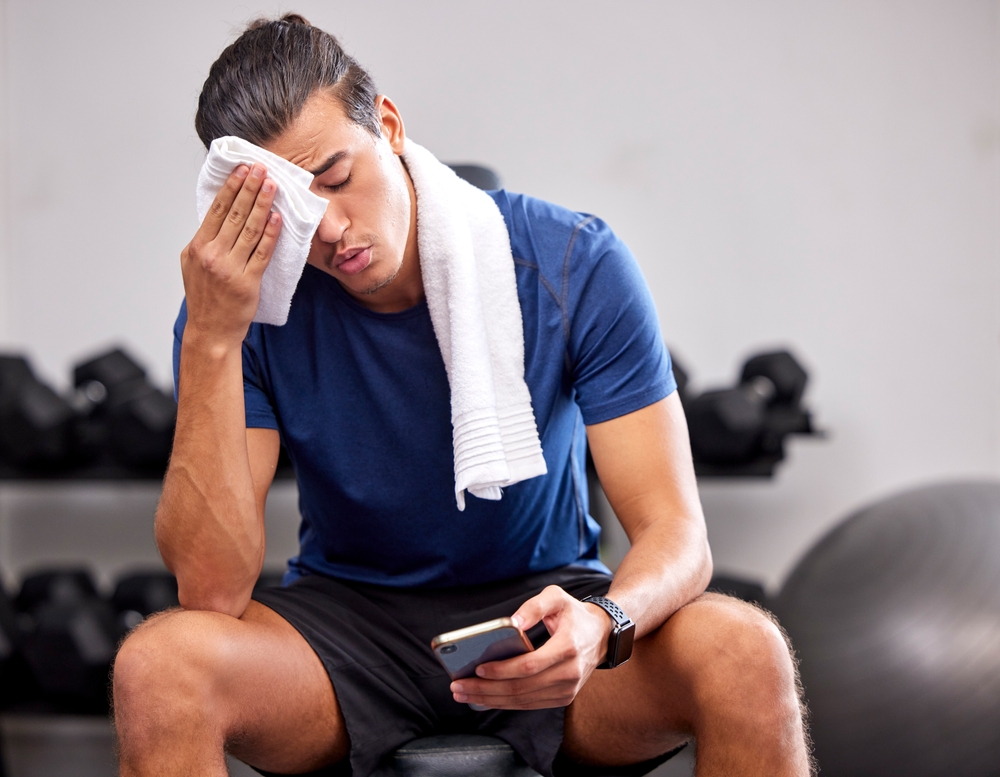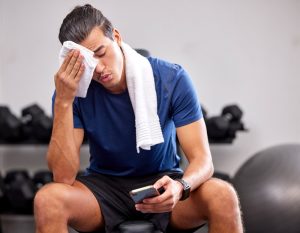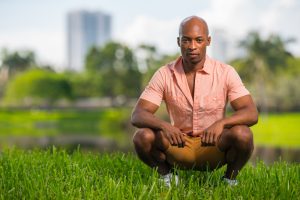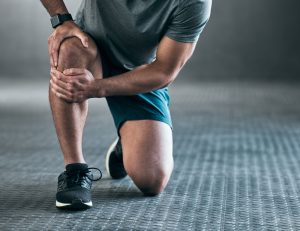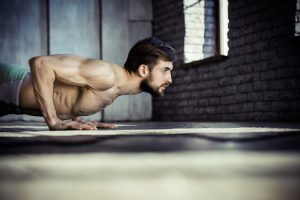The quickest way to stop sweating after a workout is to drink ice-cold water, stand in front of a fan or AC vent with your shirt off, and apply ice packs to your neck, wrists, and underarms while doing a 5-10 minute easy cool-down walk.
These steps work together to lower your core body temperature fast and help sweat evaporate from your skin—which is actually what cools you down.
Keep reading to understand exactly why your body keeps sweating after exercise ends and how to use these techniques (plus shower strategies and timing tricks) to stop dripping in under 30 minutes.
Why Your Body Keeps Sweating After You Stop Exercising
Here's what's actually happening when you finish your workout but can't stop dripping: your body is still running hot, and it needs to keep sweating until your core temperature drops back to normal.
The sweat itself doesn't cool you down—evaporation does.
When sweat sits on your skin and transforms from liquid to vapor, it pulls heat away from your body.
This is the actual cooling mechanism at work.
Think of your body like an overheated engine that doesn't instantly return to normal the moment you turn it off.
Your muscles generated significant heat during exercise, and that warmth is still radiating through your system.
Your brain detects this elevated core temperature and keeps your sweat glands active until things stabilize.
This explains why certain “solutions” don't work:
Wiping sweat away removes the liquid before it can evaporate, which means you're eliminating the very thing that would cool you down. You're essentially interrupting the process your body is trying to complete.
Taking a hot shower immediately adds more heat to an already overheated system. Your core temperature stays elevated, so your body responds by producing even more sweat to compensate.
Once you understand that you need to both lower your internal temperature and facilitate evaporation, you can target strategies that actually address the problem.
The techniques in the following sections work because they tackle one or both of these factors directly, rather than just masking symptoms or accidentally making things worse.
What to Do Immediately During and After Your Workout
The window right after you finish exercising is when you have the most control over how quickly you cool down.
Your actions in the first few minutes determine whether you'll stop sweating in 20 minutes or still be dripping an hour later.
Start with ice-cold water.
Grab the coldest water you can find and start drinking during your last set or final mile.
This isn't just about hydration—it's about internal temperature control.
When ice-cold liquid hits your stomach, thermoreceptors in your abdomen detect the temperature drop and send signals to your brain to dial back sweat production.
Room temperature water hydrates you, but it doesn't trigger this cooling response.
Keep drinking immediately after you finish exercising for the fastest results.
Create airflow around your body. The moment you stop moving, sweat starts pooling on your skin instead of evaporating.
You need to replace the air movement you were generating during exercise:
- Position yourself directly in front of a fan or AC vent
- Use a hair dryer on the cool setting if that's all you have available
- Remove your shirt whenever possible—fabric blocks evaporation and traps moisture against your skin
Don't fan yourself with your hands or a magazine.
The arm movement generates additional body heat that offsets any cooling benefit from the air movement.
Resist the urge to shower right away.
Wait at least 20-30 minutes, or better yet, wait until your skin is completely dry and your heart rate returns to normal.
Jumping into a shower—especially a hot one—before your body has stabilized keeps your core temperature elevated and triggers continued sweating.
You'll end up in a frustrating cycle where you're still dripping wet 15 minutes after getting out of the shower.
The Active Cool-Down That Actually Works
Don't collapse on the floor the second you finish your last rep.
Spend 5-10 minutes walking around or doing gentle stretches instead.
This gradual transition clears lactic acid from your bloodstream, brings your heart rate down steadily, and allows your body temperature to normalize without shocking your system.
Skip this step and you're looking at extended sweating plus potential dizziness from the abrupt stop.
While you're doing this easy movement, add targeted cooling to speed up the process.
Your body has specific spots where blood vessels sit close to the skin surface—cool these areas and you'll lower your core temperature much faster than trying to cool your entire body at once.
Prime cooling zones:
- Back of your neck
- Underarms
- Wrists
- Groin
When you apply something cold to these pulse points, you're cooling blood right before it circulates back through your system.
The chilled blood then carries that cooling effect throughout your entire body, dropping your core temperature from the inside out.
The fastest method is holding your wrists under cold running water—you'll feel relief within seconds.
For sustained cooling during your active recovery, use towels soaked in ice water rather than applying ice cubes directly.
Ice cubes can cause mild cold burns on overheated skin, while wet towels provide the same cooling effect more safely.
If you want to invest in gear specifically for this, specialized cooling towels can feel up to 30 degrees cooler when wet and maintain their cooling properties for up to two hours through evaporative action.
The Right Way to Shower After Working Out
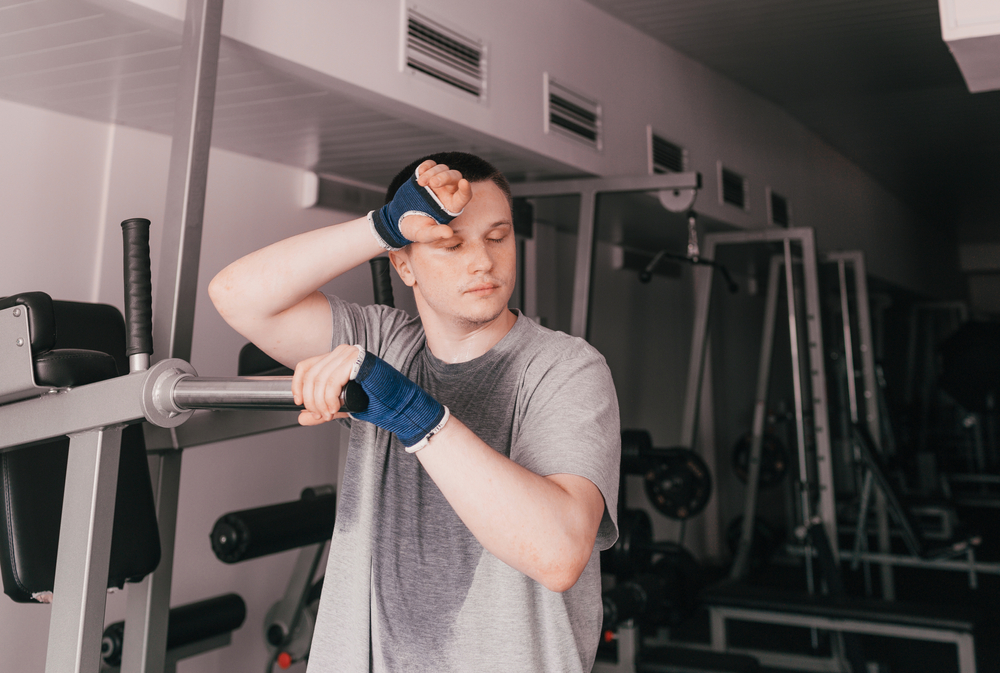
Once you've waited the full 20-30 minutes and your skin is dry, it's time to shower—but water temperature matters more than you think.
Set the water to just below body temperature.
Not ice cold, not lukewarm—aim for cool but not shockingly frigid.
Here's why this specific temperature range works: when you blast yourself with ice-cold water, your blood vessels near the skin surface constrict as a protective response.
This traps heat inside your body instead of releasing it, which then triggers more perspiration afterward as your system tries to cool down.
You end up sweating more, not less.
Cold water that's not freezing effectively lowers your core temperature without causing this rebound effect.
After you step out, change your drying strategy.
Most people immediately wrap themselves in a thick towel and rub vigorously.
Instead, pat yourself lightly to remove excess water, then let yourself air dry.
Evaporative cooling—the same mechanism that's been working to cool you down all along—continues doing its job.
This simple change prevents the common problem of sweating again right after showering.
What you put on your body matters just as much as how you dry it.
Choose loose, light cotton clothing that creates space for air circulation.
Tight synthetic fabrics trap sweat against your skin where it can't evaporate.
Leave your shirt untucked until you've fully cooled down—every bit of airflow helps.
Hold off on skin products for at least 30 minutes.
Creams, lotions, deodorants, and styling products create a barrier on your skin while your body temperature is still elevated.
This traps heat and blocks your pores right when your body is trying to complete its cooling process.
Additional Strategies for Faster Cooling
You can actually start managing your post-workout sweat before your workout even begins.
Drink cold beverages at least two hours before you exercise, spend time in air conditioning, or apply cooling packs to your body.
This pre-cooling approach slows the rate at which your body temperature climbs during your workout, which means you won't overheat as dramatically and you'll cool down faster afterward.
As a bonus, starting from a cooler baseline can improve your performance.
During your workout, drink 5-10 ounces of water every 15 minutes.
This isn't just about preventing dehydration—proper hydration enables your body's temperature regulation system to function efficiently, which directly speeds up your post-exercise cooling.
After you finish, reach for cold items that serve double duty: popsicles, ice slushies, or chocolate milk all lower your body temperature from the inside while delivering recovery nutrients.
You're cooling down and refueling at the same time.
Peppermint tea and menthol products create a cooling sensation through a neurological trick—they activate cold-sensing receptors on your skin even when no actual temperature change occurs.
The climate you're in determines which approach works best.
In dry climates, hot peppermint tea triggers sweating that then evaporates efficiently to cool you down.
In humid climates where evaporation is limited, cold peppermint drinks provide better results without adding moisture to already saturated air.
Common Mistakes to Avoid and When to See a Doctor
Even when you know what works, it's easy to sabotage your cooling efforts without realizing it.
Showering in a hot, humid bathroom immediately after exercise creates the worst possible conditions—the moisture-saturated air prevents sweat from evaporating, which means your body keeps producing more.
Open a window or turn on the bathroom fan before you step in.
Other cooling saboteurs:
- Hot beverages and spicy foods raise your internal temperature when you're trying to lower it
- Clothing that doesn't breathe traps moisture and heat against your skin
- Multiple layers worn right after working out block air circulation completely
Most people stop sweating within 30 minutes using the strategies covered here.
But if you're still drenching your clothes an hour later for no clear reason, or if you've noticed you perspire far more than normal after workouts, something else might be happening.
An overactive thyroid is a common culprit behind excessive sweating—getting this evaluated can identify an underlying issue that no amount of cooling techniques will fix.
Certain medications also ramp up perspiration as a side effect, so mention your sweating patterns to your doctor if they seem abnormal.
The fastest approach to stopping post-workout sweat combines multiple tactics: drink ice-cold water to cool from the inside, position yourself in front of fans for external cooling, apply ice to pulse points for rapid temperature reduction, complete a proper 5-10 minute cool-down, time your shower strategically, and give yourself 20-30 minutes for your body to naturally return to baseline.
No single method works as effectively as layering several together, and you need a bit of patience—your body can't instantly reverse the heat you generated during exercise.
Conclusion
Stopping post-workout sweat comes down to understanding what your body needs—lower core temperature and efficient evaporation—then giving it the right conditions to make that happen.
The combination of ice-cold water, strategic airflow, pulse point cooling, and proper shower timing will get you dry and comfortable in under 30 minutes.
Start using these techniques after your next workout and you'll notice the difference immediately.

